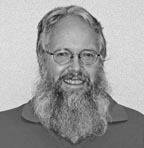Another New Book!
“Frontier Days in Crescenta Valley”

president of the Historical Society
of the Crescenta Valley and loves local history. Reach him at
lawlerdad@yahoo.com.
Joining the many local history books on the shelves is the latest from the current president of the Historical Society of the Crescenta Valley, Jo Anne Sadler. Jo Anne had previously written, “Crescenta Valley Pioneers and Their Legacies.” That book focused on biographies of many of our community’s founders, whose names make up the geographical and street names that are familiar to us today. Jo Anne is the consummate researcher, and she has an amazing ability to find hidden information previous historians haven’t touched on.
A personal peeve of mine is that too many history books focus on the generals, the presidents, and the leaders of industry to the point that we think our ancestors lived exclusively amongst wealth and power. In “Frontier Days in Crescenta Valley: Portraits of Life in the Foothills,” Jo Anne takes a look at the everyday lives of the average man and woman living quietly in the sagebrush and rocks of CV. We learn how they made their living, what they did in off hours, and big events they would have witnessed. Life was hard, dirty and sometimes dangerous. Jo Anne often uses the pioneers’ own words, and the book is rich with vivid firsthand accounts of daily life, so much so that in reading the book we begin to hear the voices of these very real people, now long dead.
How did early CV residents make a living? In the first chapter of Jo Anne’s book, “Bee Ranching and Greasewood” we learn that many pioneers listed their professions as “apiarists” or beekeepers. In the late 1800s, the canyons of Southern California were considered the best beekeeping land in the world. Add to that the fact that beekeeping was considered easy work, and it’s natural that CV’s residents produced and sold honey, either full or part time. Another source of income was cutting and selling firewood. Los Angeles, growing quickly on a treeless plain, received wagonloads of sagebrush stumps, or “greasewood,” from CV. This supplied early residents with a few dollars, and helped clear the land for cultivation. Much of the cleared land was planted in grapes, which the pioneers both ate and sold as table grapes and raisins, and fermented into wine and brandy. In “Wine, Vines, and Raisins” we hear about the marketing and fame of “La Crescenta wines” and dried fruit. The buying and selling of land made money for residents as well, and there’s a chapter on early efforts to market La Cañada.
For recreation, the rougher locals fished and hunted, and the cover of the book has a photo of the last wild grizzly bear in Southern California, shot in Tujunga in 1916. “Hunting in the Foothills” covers the almost daily killing and consumption of wild birds, deer, coyotes, bears and snakes. There was a gentler element in the valley as well, chronicled in “Culture and Poetry in the Valley.” For them, off-hours were spent absorbed in literature, poetry and social events, supplemented with writing, painting and photography.
Some big events Jo Anne writes about include the La Crescenta Hotel disaster of 1887, in which the two-story hotel at the corner of Rosemont and Foothill was flattened in a windstorm, killing two. Another is the 1904 La Crescenta dry encounter with an unsuccessful rainmaker, “Professor” Hatfield. His life was portrayed in the 1956 Burt Lancaster movie “The Rainmaker.”
The book is rounded out with tales of the Gould Castle, a full-on stone castle that sat completely abandoned and mysterious at the top of Ocean View for the first half of the 20th century. There’s the story of Charles Pate, a moneyed Englishman who came here dreaming of being a cowboy, and who instead became a chronicler of life in turn-of-the-century La Cañada. And finally, we learn about the beautiful Turner Ranch, which Senator Frank Flint bought in 1905 to become the upscale community of Flintridge.
“Frontier Days in Crescenta Valley” paints a realistic view of life in the sagebrush – an unglamorous existence, often humorous, often deadly. This book brings our past to life – a past that makes our present richer.
